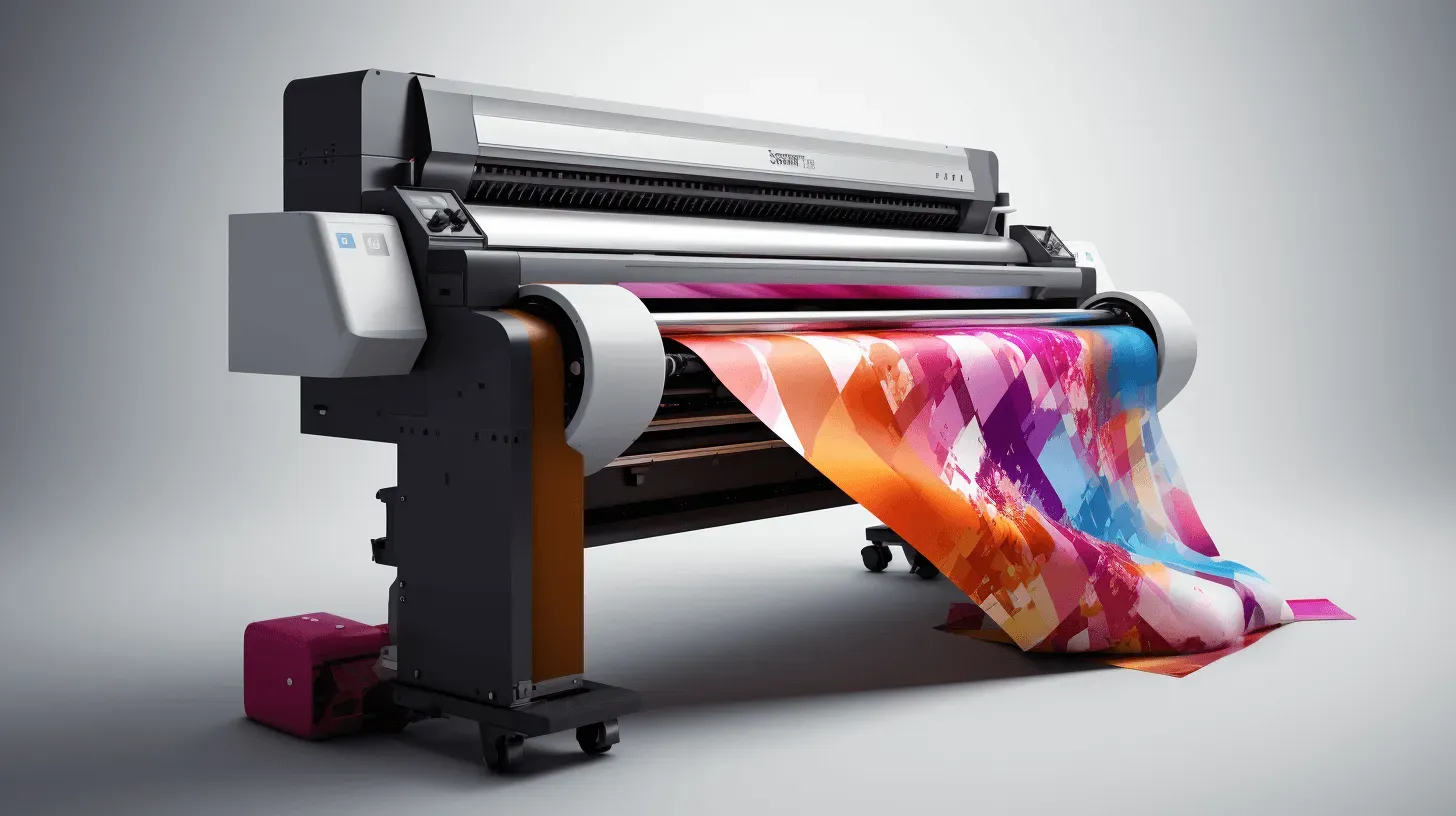DTF printing, or Direct-to-Film printing, has emerged as a leading method in the textile printing industry, celebrated for its ability to produce stunning, high-quality designs on a variety of fabrics. Whether you’re a seasoned professional or just starting out, understanding the nuances of DTF printing is essential for achieving vibrant and durable prints. This article will explore vital DTF printing tips and best practices that can significantly improve your print quality and enhance customer satisfaction. From selecting premium materials to effective equipment maintenance, we’ll cover everything you need to know to elevate your DTF printing game. Join us as we dive into the world of DTF printing, where creativity meets innovation and quality comes first.
Direct-to-Film printing, often abbreviated as DTF printing, is revolutionizing the way designs are transferred onto fabrics, providing a versatile solution for businesses and hobbyists alike. This innovative technique allows for intricate, full-color designs to be easily applied to various textiles, making it highly sought after in a competitive market. As we explore this topic, we’ll introduce useful strategies and insights into achieving exceptional printing results, from fabric preparation to optimizing printer settings. By focusing on critical aspects such as material selection and equipment upkeep, you can enhance the overall durability and aesthetic of your printed garments. Let’s uncover the secrets to mastering this art and ensuring your prints stand out with remarkable quality.
The Importance of Material Quality in DTF Printing
When it comes to DTF printing, the quality of materials plays a pivotal role in determining the final print output. Using high-grade PET film and premium inks not only ensures vibrant colors but also enhances longevity, making the prints more resistant to wear and tear. Well-known brands like Epson and Mimaki are reputable in the industry for their reliable product offerings that can significantly impact printing outcomes. Ultimately, choosing the best materials allows for greater creativity and satisfaction in printed designs.
Moreover, the selection of materials can influence the printing process itself, affecting factors such as ink absorption and adhesion. It’s important to conduct thorough research and invest in trusted supplies — this includes understanding the specifications and compatibility of your chosen films and inks. Having a robust base ensures that you can push the limits of DTF technology, leading to outstanding results that stand out in the competitive textile market.
Optimal Printer Settings for High-Quality DTF Prints
Achieving superior print quality in DTF printing heavily relies on the optimal configuration of your printer settings. For instance, adjusting the resolution to between 720 to 1440 DPI is crucial for capturing detailed images without pixelation. This specific setting allows for a clear and vibrant representation of designs, making them pop on various fabrics. Additionally, employing the correct color management profiles will ensure that colors appear accurate and consistent across different prints.
Furthermore, it’s essential to familiarize yourself with the specific capabilities and features of your DTF printer. Many modern printers come equipped with preset configurations that can significantly streamline the setup process; however, adjustments should still be made to tailor the printer settings for different projects. Ensuring that the printer is calibrated correctly not only results in high-quality finishing but also optimizes the efficiency of your workflow.
Techniques for Proper Adhesive Powder Application in DTF Printing
The application of adhesive powder is a fundamental step in the DTF printing process, directly influencing the durability and adhesion of the prints. For optimal results, an even coat of adhesive powder must be applied to ensure the design bonds effectively with the fabric. Using tools such as powder shakers or dispensers can aid in achieving uniform coverage, which contributes to minimizing issues like peeling or lifting over time.
Additionally, understanding the characteristics of different adhesive powders can help improve the quality of prints. Some powders are designed specifically for various fabric types and can enhance transfer efficiency. Regularly assessing and adjusting your adhesive application technique will not only extend the life of your prints but also maintain the professional standard your customers expect.
Significance of Effective Curing Processes in DTF Printing
Curing is a critical process in DTF printing, as it determines the overall durability and quality of the final product. Insufficient curing may lead to prints that fade or crack after washing, diminishing the value of your work. To ensure optimal durability, a heat press should be used to cure prints at a temperature of approximately 320°F for 15-20 seconds, allowing enough time for the adhesive to bond thoroughly with the fabric.
Moreover, different materials may require slight adjustments to curing times and temperatures, necessitating a bit of experimentation. Regularly monitoring your curing process and equipment will ensure that you’re achieving the desired results with every print. Proper curing not only embeds the design deeply into the fabric but also enhances the overall aesthetic appeal of the finished garment.
Implementing Pre- and Post-Production Procedures for Quality Control
Quality control in DTF printing extends beyond the printing itself; it begins with pre-treatment procedures of the fabrics. Ensuring that the garments are clean and free from contaminants such as dust or lint can significantly enhance print adherence and vibrancy. This attention to detail during the preparatory phase sets a strong foundation for high-quality outputs that meet customer expectations.
In addition to pre-treatment, post-production procedures such as heat pressing can provide an extra layer of durability to the prints. This step not only helps in ensuring that the adhesive is fully activated but also enhances the visual quality of the prints, giving them a polished and professional look. By implementing thorough pre- and post-production processes, you are investing in the longevity and appeal of your DTF prints.
The Role of Equipment Maintenance in Achieving DTF Printing Excellence
The effectiveness of DTF printing is heavily dependent on the condition of the equipment used. Regular maintenance of your DTF printer, including cleaning print heads and checking for clogs in ink lines, is vital for ensuring that the printer operates optimally. Properly maintained equipment not only guarantees consistent quality in prints but also helps prevent disruptions in your printing schedule.
Moreover, establishing a routine maintenance schedule can help identify potential issues before they escalate into more serious problems. Taking the time to assess the mechanics of your printer and perform necessary adjustments will lead to enhanced performance and longevity of the equipment. Ultimately, dedication to equipment maintenance is a key component to mastering the art of DTF printing, ensuring that you deliver exceptional quality consistently.
Frequently Asked Questions
What are the best practices in DTF printing for achieving high-quality prints?
To achieve high-quality prints in DTF printing, focus on using high-quality PET film and inks, optimize your printer settings to 720-1440 DPI, ensure even application of adhesive powder, and meticulously follow the curing process at 320°F for 15-20 seconds. Regular testing and adjustments are also key to refining your results.
How can I improve DTF print quality in my projects?
Improving DTF print quality can be achieved by using premium materials, adjusting printer settings appropriately, applying adhesive powder uniformly, and ensuring proper curing. Additionally, conducting regular tests on various fabrics will help you identify the best practices tailored to your specific needs.
What equipment maintenance is needed for DTF printing?
For maintaining DTF printing equipment, regularly clean the print heads, check for ink line clogs, and perform routine mechanical inspections. Keeping your equipment in good condition is essential for ensuring consistent print quality during every run.
What steps are essential for the adhesive powder application in DTF printing?
In DTF printing, ensure the adhesive powder is applied evenly using a powder shaker or dispensing tool. A uniform application is critical to minimize issues like peeling or lifting, thus improving the overall quality and durability of your prints.
How does the curing process affect DTF printing quality?
The curing process is vital in DTF printing as it ensures the adhesive properly bonds with the fabric. Insufficient curing can lead to quick deterioration of prints. Following guidelines of heat pressing at around 320°F for 15-20 seconds is crucial for optimal durability and print quality.
Why is pre-treatment of fabrics important in DTF printing?
Pre-treatment of fabrics is crucial in DTF printing as it ensures that the garments are clean, free from lint, dust, or contaminants. This step significantly enhances the adhesion and longevity of prints, ultimately leading to higher quality DTF results.
| Key Point | Explanation |
|---|---|
| Quality of Materials | Using high-quality PET film and inks ensures vibrant and long-lasting prints, with trusted brands like Epson and Mimaki. |
| Optimal Printer Settings | Adjust printer settings, especially resolution, ideally at 720-1440 DPI, to capture detailed, vibrant images. |
| Proper Adhesive Powder Application | Uniform application of adhesive powder minimizes the risk of peeling and enhances the bond to fabrics. |
| Effective Curing Process | Cure prints at 320°F for 15-20 seconds to ensure durability and prevent issues like washing out. |
| Pre- and Post-Production Procedures | Clean fabrics before printing and consider post-curing treatments for enhanced print durability. |
| Testing and Adjustments | Conduct regular test prints on different fabrics to determine ideal settings and improve expertise. |
| Maintenance of Equipment | Regularly clean and maintain printers to ensure optimal performance and consistent print quality. |
Summary
DTF printing has revolutionized the textile printing industry by enabling vibrant, high-quality designs on a diverse range of fabrics. Maximizing quality in DTF printing requires adherence to several best practices, including the use of premium materials like PET film and dependable inks, configuring printer settings for superior resolution, and ensuring meticulous application of adhesive powder. The curing process is critical, as proper temperature and time ensure prints bond effectively, safeguarding durability against wear and washing. By maintaining rigorous pre- and post-production standards, conducting continual testing, and performing regular printer maintenance, you can consistently produce prints that not only meet but exceed customer expectations. With these strategies, your DTF printing endeavors will lead to outstanding results and satisfied clients.






